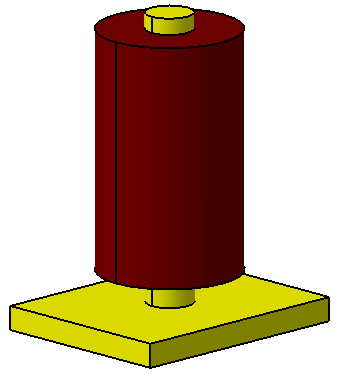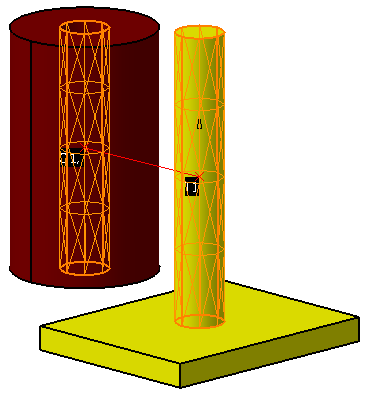The
|
|
Within this section: Feature Specification Procedure
|
See also: |

Feature Specification
Object and target features can be any of the following combinations:
Object Features |
Target Features |
One Feature to define an Axis |
One Feature to define an Axis |
A pair of Points (2) to define an Axis |
A pair of Points (2) to define an Axis |
Procedure
The cylindrical joint can be created for a variety of model applications, but the basic procedure is as follows.
STEP 1 Feature Tab:
Click in the Object Features box and select one or two features to define the axis of rotation for the part(s) to be moved.
Click in the Target Features box and select one or two corresponding feature(s) to define the axis of rotation for the target part(s).
An example is shown below where the axes of the cylinders are the Features.

STEP 2 Move Parts Tab:
Parts should automatically be added to Move Parts based on the Tree structure of the model. Verify that these are the desired parts. Only two parts can be added to this list. The first part corresponds to the Object features and the second part corresponds to the Target features.
STEP 3 Settings Tab:
Update settings as desired.
STEP 4 Floating Tab:
Turn float on/off by checking the box after selecting the hole-pin pair from the drop-down list (if applicable).
Also See